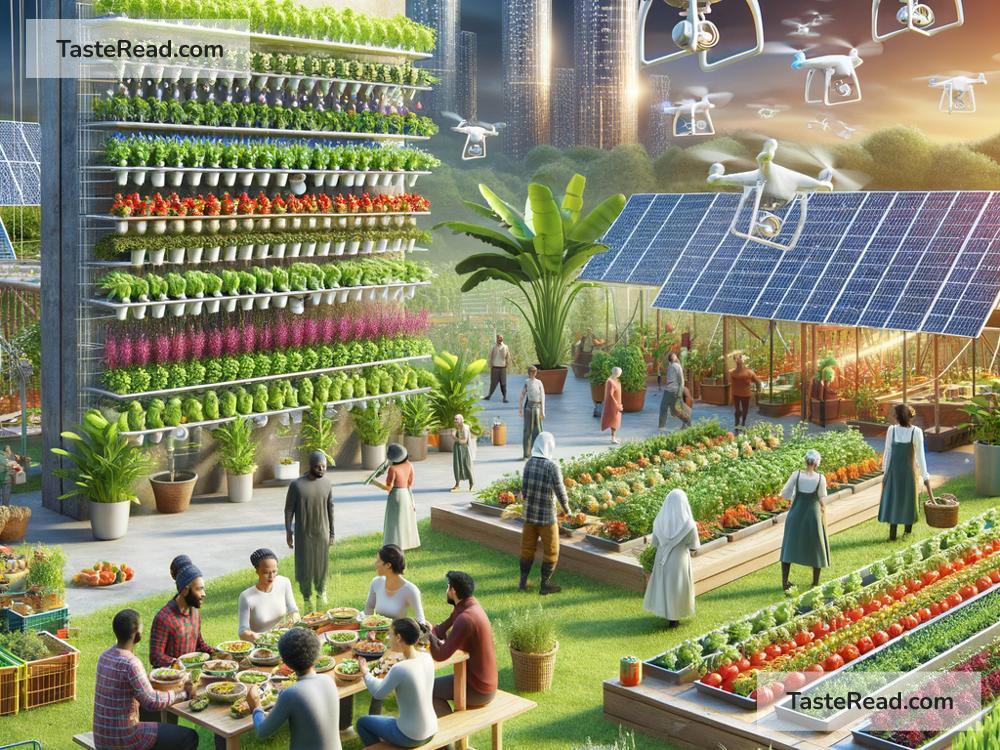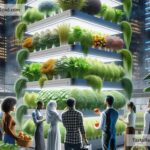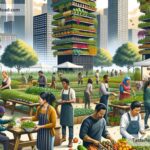The Future of Food and Regenerative Community Models
Food is something we all need to survive. But as the world changes, questions about how we grow, share, and consume food are becoming more important than ever. With climate change, growing populations, and limited natural resources, we need new ideas to ensure our food system can keep up. One exciting approach is shifting toward “regenerative community models”—ways of living, growing, and sharing food that help rebuild and strengthen both the environment and local communities. Let’s explore what this could look like in the years ahead.
Why Do We Need to Rethink Food?
Today, much of the food we eat comes from large farms that use chemicals like pesticides and fertilizers. While this makes it easier to grow more food, it also harms the soil, water, and air over time. Industrial farming can deplete the Earth’s capacity to renew itself, leaving behind degraded soil and polluted ecosystems. It also depends heavily on fossil fuels for transportation and machinery, contributing to climate change.
Meanwhile, millions of people still don’t have access to healthy, fresh food. In many cities, low-income areas are “food deserts,” where grocery stores are few and far between, making it hard for local residents to find affordable fruits and vegetables. On the flip side, excessive food waste is another huge problem: nearly 30% of the food produced globally is thrown away.
Clearly, something needs to change—not just to make food more sustainable but also to create fairer systems where everyone has access to nourishing food.
What Does the Future Hold for Food?
The future of food lies in growing smarter, using fewer resources, and building systems that are good for the planet and its people. New technologies and innovative farming methods are already helping us get closer to these goals:
-
Vertical Farming and Urban Agriculture: These methods focus on growing food in smaller spaces, like inside buildings or on rooftops, using techniques like hydroponics and aquaponics. Vertical farming can happen in cities, bringing fresh food closer to where people live and reducing transportation costs.
-
Lab-Grown Meat and Alternative Protein: Companies are now creating meat from animal cells in labs, which doesn’t require raising or slaughtering animals. Additionally, plant-based proteins made from products like peas or soy are offering eco-friendly alternatives to traditional meat. These approaches could reduce land use, water consumption, and carbon emissions.
-
Precision Agriculture: Farmers are using tools like sensors and drones to monitor crops and apply water or nutrients only where needed. These high-tech methods ensure less waste and healthier harvests.
While technology provides hope for a better future, sustainability isn’t just about machines or gadgets. It’s also a cultural shift—one that prioritizes communities, fairness, and connection to the Earth. That’s where regenerative community models come in.
What Are Regenerative Community Models?
Regenerative community models are ways of living that work in harmony with nature while also supporting people’s well-being. In these systems, communities aim to give back to the land rather than just take from it. They grow food in ways that restore soil, improve biodiversity, and protect water sources. At the same time, these models emphasize cooperation and shared responsibility within the community.
Here are a few examples of how regenerative models could change the food system:
1. Community Gardens
Imagine neighborhoods having shared gardens where people work together to grow vegetables, fruits, and herbs. Community gardens not only provide fresh food but also bring people closer to nature and each other. They reduce dependence on industrial agriculture and teach valuable skills like composting and sustainable growing practices.
2. Regenerative Farming
Regenerative farming is about healing the land while growing nutritious food. Farmers do this by planting cover crops, rotating crops, reducing tillage, and using organic matter to enrich the soil. Healthy soil can capture more carbon from the air, which helps fight climate change. Communities can support local regenerative farms through programs like “farm-to-table” initiatives or farmers’ markets.
3. Food Sharing Networks
Food doesn’t have to be a commodity that only big businesses control. Regenerative models encourage local food economies, where people can share surplus food or trade goods directly. Apps and online platforms are making it easier for people to connect within their communities, reducing food waste and improving access to healthy options.
4. Education and Awareness
Teaching people—especially children—about the importance of sustainability, nutrition, and cooking can help create long-term habits and values around food. Schools, libraries, and community centers could host workshops on gardening, healthy eating, and waste reduction, empowering the next generation to make better choices.
Why Regenerative Systems Matter for the Planet
Unlike industrial farming, regenerative systems focus on healing and renewing the natural world. Big monoculture farms grow only one type of crop, draining the soil of nutrients. But regenerative farms focus on variety, planting multiple kinds of crops together to improve biodiversity. Healthy soils, diverse plant life, and clean water sources allow ecosystems to thrive.
What’s more, regenerative food systems can lower carbon emissions by reducing dependence on fossil fuels and chemicals. They also create stronger local economies, where food is grown and shared nearby instead of shipped across the globe.
Building Stronger Communities Through Food
The future of food isn’t just about technology or farming methods; it’s also about rethinking our values. Regenerative community models encourage people to reconnect with the land and with each other. These systems value collaboration over competition, emphasizing fairness, access, and sustainability for all.
To make this future possible, we’ll need to work together: supporting local farmers, reducing waste, and educating ourselves about sustainable choices. Governments, businesses, and individuals all have roles to play in transitioning to food systems that serve both the planet and its people.
The future of food is bright, but it depends on bold actions and new ideas. Together, we can create systems that nourish not just our bodies but the world we share.


